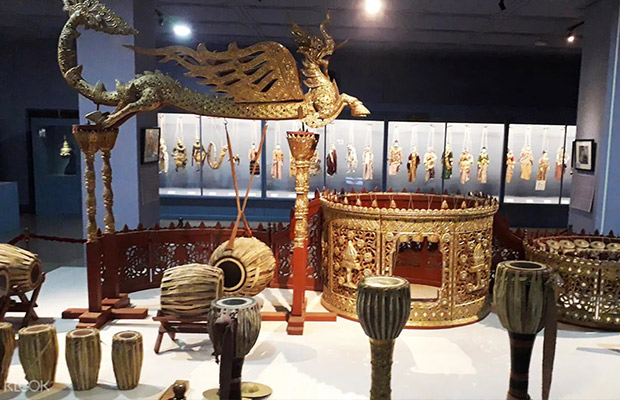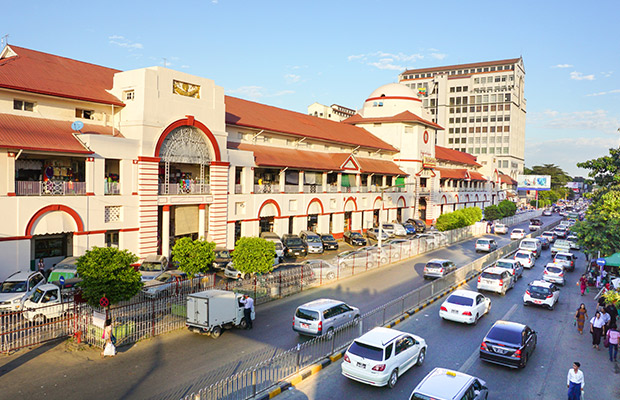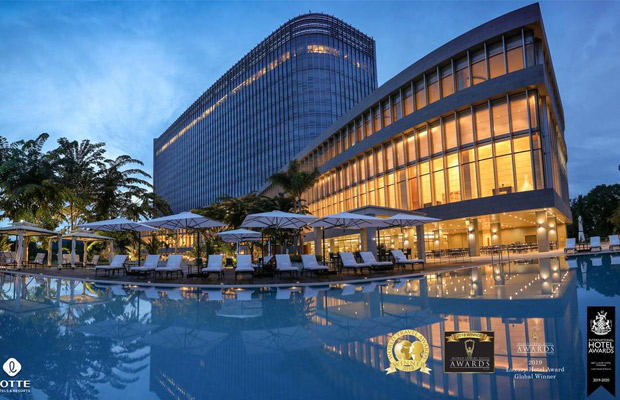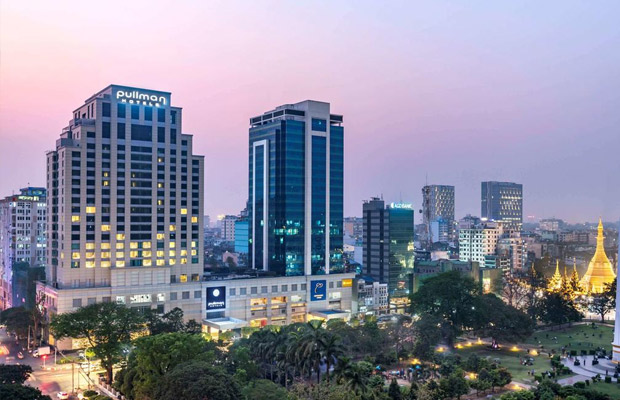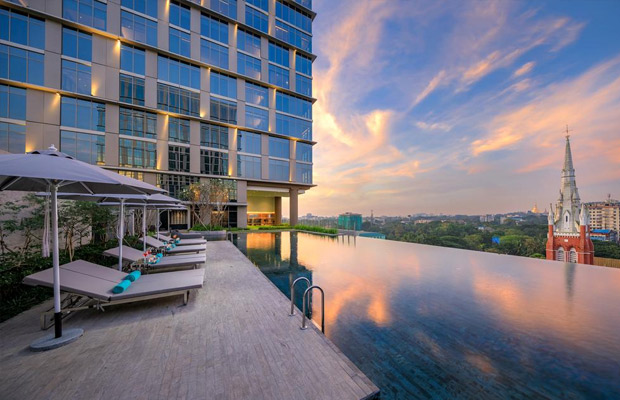Kaba Aye Pagoda
Kaba Aye Pagoda
Myanmar
Yangon
Yangon Travel Guide
Book Tour & Activities
Your tour in Yangon.
Book your stay
Your hotel in Yangon.
Overview
Kaba Aye Pagoda, formally Thiri Mingala Gaba Aye Zedidaw, is a pagoda located on Kaba Aye Road, Mayangon Township, Yangon, Myanmar. The pagoda was built in 1952 by U Nu in preparation for the Sixth Buddhist Council that he held from 1954-1956. The pagoda measures 111 feet high and is also 111 feet around the base. The pagoda is located approximately 11 km north of Yangon, a little past the Inya Lake Hotel. The Maha Pasana Guha was built simultaneously with the Kaba Aye Pagoda and is located in the same complex. The cave is a replica of the Satta Panni cave, located in India, where the first Buddhist Synod was convened. The six entrances of The Maha Pasana Cave symbolize the Sixth Great Synod. The cave is 455 feet long and 370 feet wide. Inside, the assembly hall is 220 feet long and 140 feet wide.
“World peace pagoda” & Maha Pasana Guha that hosted the 6th Buddhist council
The Kaba Aye paya or “World peace pagoda” is a relatively recent pagoda in Yangon. The pagoda and the adjoining Maha Pasana Guha cave were built in 1952 by U Nu, the prime minister of Burma to host the 6th Buddhist council which ended in 1956, 2,500 years after the Buddha’s passing into final Nirvana.
The stupa measures 36 meters tall and has a circumference of 34 meters around the base. Its golden dome is topped with a multi tiered hti, an ornamental spire shaped like an umbrella.
Around the lower part of the pagoda is a very colorful circular structure in which are five entrances topped with elaborately carved arches. Large niches in between the entrances enshrine standing images of the Buddha in front of mural paintings.
Vendors at the entrances sell candles, incense sticks and other items to devotees who come to make merit.
Background
As prime minister of Burma, U Nu built the Kaba Aye Pagoda and the Maha Pasana Guha Cave (မဟာပါသာဏလှိုင်ဂူသိမ်တော်ကြီး) in 1952 in preparation for the Sixth Buddhist Synod that he convened and hosted and which lasted two years, from 1954–1956. This Synod coincided with the 2500-year anniversary of Buddha’s enlightenment. In Burma, the kings traditionally built a pagoda in their honor to stand as a relic of their rule. For example, Ne Win built the Maha Wizaya Pagoda in his honor. The construction of the pagoda and cave were a part of U Nu’s attempt to establish Buddhism as the official religion of Burma, thereby creating a Buddhist state.
The Kaba Aye pagoda is open daily from 6 am to 8 pm, with an admission fee of $5. In addition to the Burmese who make religious pilgrimages, the pagoda attracts domestic as well as foreign tourists. The Kaba Aye Pagoda compound is large and is intended to be peaceful and quiet for the tourists, monks and devotees who visit.
The circular platform surrounding the main pagoda is enclosed in the style of a cave-temple. There are five porches decorated with colorful arched pediments. Lotus flowers, lotus buds and swastikas are carved in stucco around the outside. The main pagoda is 117 feet 6 inches high, with smaller pagodas on the five porches each 8 feet (2.4 m) high. Vendors sell handmade products on the entrances to the pagoda. The pagoda, which is hollow, has a middle point inside which features four great Buddhas (four great pillars) in commemoration of the four Buddhas who have already appeared in the world. A room inside the pagoda houses Buddha relics, including a large silver statue of Buddha, over eight feet tall. There is also a room inside the pagoda, which is used to keep Buddha relics.
The Maha Pasana Cave, which translates to “great cave of stone,” is located to the north of the Kaba Aye pagoda. The cave is a replica to the cave by the same name in India, where the first Buddhist Synod or Great Council was held just some months after the Buddha underwent Parinirvana. During the sixth Buddhist Synod in 1954, 2500 monks converged on the cave to recite the words of the Buddha in Pali, the entire Tipitaka. The monks recited, edited, and approved all of the Buddhist scriptures, known as the Three Pitakat.
Interior of the pagoda
In the center of the pagoda is a large, hollow pillar. Its exterior is adorned with murals of nature in blue and green colors. Around the pillar are golden images of the four Buddhas that have reached Nirvana, namely Kassapa Buddha, Kakusandha Buddha, Konagamana Buddha and Gautama Buddha.
Inside the hollow pillar is a large silver Buddha image in the Bhumisparsha mudra of “Calling the Earth to witness”, seated on a elaborate pedestal. Around the walls are numerous smaller images in various postures. The pagoda’s outer walls opposite the pillar are adorned with large murals showing Buddhist depictions.
Maha Pasana Guha cave
The Maha Pasana Guha (“Great cave”) is a large man made “cave” that contains a meeting hall where the 6th Buddhist council was held. The meeting hall was built inside a cave because the first Buddhist council was held inside a cave in India shortly after the Buddha’s passing into final Nirvana about 2,500 years ago. The hall’s six entrances and six large pillars supporting the roof symbolize the six councils.
The hall measuring 67 meters long and 43 meters wide with a high ceiling is now used for various meetings and to host examinations on the Tripitaka, the teachings of the Buddha. At the end of the hall is a small Buddha image seated on an elaborate throne in the “Calling the Earth to witness” posture.
Other structures
Also on the grounds are the Buddhist art museum and the Buddhist learning center, as well as a fish pond where large catfish are fed by devotees to make merit.
How to get to the Kaba Aye Pagoda
The pagoda is found in Mayangon township, North of Yangon town center. It is located on Kabar Aye pagoda road, about 1 kilometer North East of Inya Lake. The Maha Pasana Guha is directly North of the pagoda.
Opening hours
The Kaba Aye pagoda opens daily from 6 am until 8 pm.
Entrance fee
Entrance fee is US$ 5.
Kaba Aye Pagoda
- Address: Kabar Aye Pagoda Rd, Yangon, Myanmar (Burma)
- Opened: 1952
- Phone: +95 1 660 002
- Founder: U Nu
Video Travel Inspiration
See Kaba Aye Pagoda on Map
Most Popular Cities

Siem Reap
Cambodia
Ho Chi Minh City
Vietnam
Beijing
China
Paris
France
London
United Kingdom
New York
USA
Tokyo
Japan
Bangkok
Thailand
Seoul
South Korea
Vientiane
Laos
Yangon
Myanmar
Washington DC
USA
Los Angeles
USA
Ottawa
Canada
New Delhi
India
Singapore
Singapore
Kuala Lumpur
Malaysia
 English
English French
French Khmer
Khmer Thai
Thai Vietnamese
Vietnamese Chinese
Chinese Korean
Korean German
German Japanese
Japanese Italian
Italian Russian
Russian Spanish
Spanish Dutch
Dutch Indonesian
Indonesian Malay
Malay



